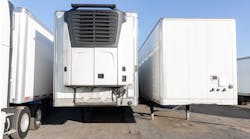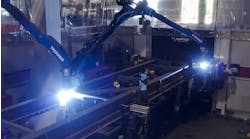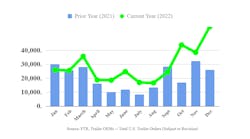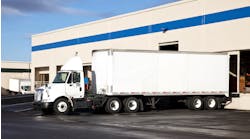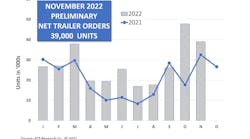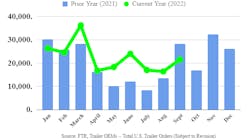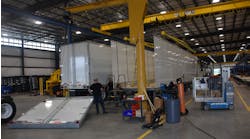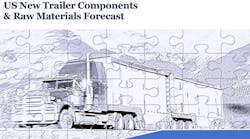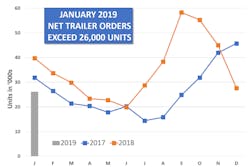The trailer industry’s strong order streak, which started in the fall of 2017, came to an end at the close of 2018, but the softness was not necessarily due to a change in fleet confidence, according to ACT Research in this quarter’s Trailer Components Report.
The fourth quarter of 2018 closed with the industry at an historically high backlog, ACT said, although December posted a decline in net orders of 39% month-over-month, and 40% year-over-year.
“At this point, we don’t see softening demand for trailers as the driver of the recent downtick in orders,” said Frank Maly, ACT’s director of commercial vehicle transportation analysis and research. “We’ve heard multiple comments regarding OEMs’ unwillingness to accept additional orders. Their concern is the uncertainty regarding material and component pricing for the longer term, which makes trailer pricing decisions difficult.
“Additional production is being limited by ‘availables,’ meaning available capacity, available labor, and available components and materials.
“Some weather impact may have hampered production rates in early 2019, but discussions have included concerns about the availability of undercarriage components, ie suspensions and axles, with air suspensions specifically mentioned.”
ACT also revised its trailer order volume for January, with the final tally surpassing 26,000 net orders in its most recent State of the Industry: U.S. Trailer Report.
“Two factors are impacting order placement,” Maly said.
“First, the dramatic surge in orders during the second half of 2018 rapidly filled available 2019 build slots, so few production spots are available, and secondly, just because fleets want to order doesn’t mean OEMs are willing to extend their obligations, given uncertainties of component costs that far into the future.
“January’s minor sequential backlog decline was that metric’s first month-over-month slide since June, with net order volume not quite strong enough to outpace build during 2019’s first month, as seven of the ten trailer categories posted sequential backlog declines.”

